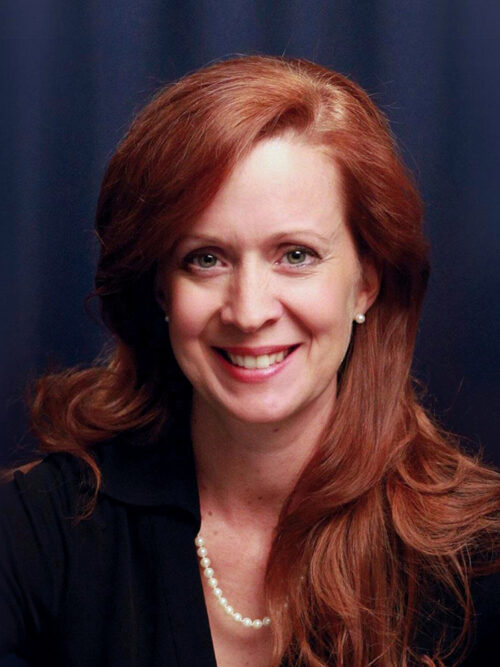
Home » New commercialization director brings can-do spirit to PNNL tech transfer
New commercialization director brings can-do spirit to PNNL tech transfer

July 13, 2022

With apologies to the Farmers Insurance ad, Christina Lomasney knows a thing or two because she’s seen a thing or two.
She studied physics to become a professor, then launched two businesses that overcame improbable odds to success.
As director of commercialization for the Pacific Northwest National Laboratory, she draws on all her experience to push technology developed at the U.S. Department of Energy laboratory into the commercial marketplace, part of its mission to bolster the U.S. economy and national security.
Lomasney brings the experience of leading two successful ventures in Seattle to the post. In 2015, Fortune named her one of the World’s Most Promising Women Entrepreneurs.
By that time, Lomasney had weathered challenges that would have tested most young ventures.
Instead, she and her teams fought through the setbacks and built thriving companies.
She moved to the Tri-Cities in 2020, after leaving her latest venture, Seattle-based Modumetal Inc. She was intrigued by the area and because her now-husband, Gen. James Mattis, lives here.
Before joining PNNL, she joined the Entrepreneur in Residence program at Washington State University Tri-Cities in Richland and got to know the PNNL commercialization team and the “amazing” array of discoveries within the lab.
When her predecessor, Lee Cheatham, left in January, she jumped at the chance to lead the commercialization program.
A physicist, Lomasney explores the laboratories in north Richland with the eye of a scientist and the pragmatism of a business executive. Her take: PNNL’s labs are teeming with technology that could change the world for the better, from climate change to energy storage to national security.
“I do feel like I have discovered the greatest candy store on earth,” she said.
PNNL, operated by Battelle, debuted in 1965 and saw its mission focused on energy and national security in the mid-1970s, when the Atomic Energy Commission became the Department of Energy in response to the energy crisis. It receives about $1 billion annually for scientific research across a variety of disciplines, including energy and security.
Congress requires the DOE labs to transfer technology developed at taxpayer expense into the market without directly competing with the private sector. Lomasney said the best way to do that at PNNL is through small and local businesses.
Tech transfer is not new. PNNL has been commercializing technology for decades with prominent successes in its portfolio.
At airports, passengers pass through whole-body scanners powered by millimeter wave technology developed and licensed by PNNL. Ultrahigh-frequency radio waves penetrate clothing and non-metallic barriers to aid Transportation Security Administration (TSA) officials screening for concealed objects.
Lomasney called it an example of helping commercialize promising technology by identifying potential customers and working with them to develop it.
PNNL identified travel and transportation as outlets for millimeter wave tech. It began working with the Federal Aviation Administration in 1989 and secured its first patent in 1995. It licensed the tech to SafeView Scout, which was later acquired by L3 Communications.
By partnering with industries that stood to benefit from enhanced security – tourism and transportation – the lab fostered demand for its emerging technology.
“If they see it, that can create the pull,” she said.
Another favorite example is lab-developed technology that keeps cutting blades sharp in the processing plants that churn out frozen french fries – a significant industry in the Mid-Columbia. Lomasney likes to talk about it because anyone who eats french fries can appreciate the science that helps put them on their plates.
“We save the world in many ways,” she joked.
STARS Technology Corp., a Richland clean tech start-up, is another PNNL licensee on the cusp of commercial operation.
The technology generates hydrogen from conventional natural gas, or renewable natural gas made from biomass and is being implemented by SoCalGas to support California emission goals.
A reluctant executive
Lomasney, who hails from New Orleans, moved to Seattle to study physics at the University of Washington. When she first declared her major, she heard that physics was a favored major of the Fortune 500, the country’s biggest businesses.
She paid little attention. Intending to work in academia, she went on to earn a master’s degree in physics, again at UW.
She didn’t plan on a business-oriented career, but one found her. Her first job was at the Boeing Co.
Later, with her father, she “reluctantly” started Isotron Corp., which creates technologies to support decontamination and environmental restoration.
For various reasons. Isotron wasn’t able raise money, meaning it had to pay its own bills from the start.
It was profitable enough that management required its researchers to devote 10% of their time to non-core topics. The “10% rule” led to the metal-working discovery that led to the formation of Modumetal, her second company.
Modumetal raised more than $100 million to commercialize what it saw as an industry-changing process to produce metal parts that resist corrosion better than steel.
Its startup phase was daunting. Modumetal learned its innovative procedures were already patented by Delphi, an auto parts manufacturer. There was no way around them, attorneys said.
Fortune blessed Modumetal when Delphi filed for protection from creditors in U.S. Bankruptcy Court in New York in 2005, putting its patents up for sale.
Modumetal bought them. That helped, but did not solve, its IP problem. The Department of Energy had an interest in the technology as well. It took another three years to work out an agreement.
“If we hadn’t been persistent, that tech would have been lost,” she said.
Its IP problem solved, Modumetal built a manufacturing plant on Seattle’s Lake Union. It booked orders for its line of corrosion-resistant nuts, bolts and tubular products.
On May 3, 2013, opening day of boating season, Lomasney got an alert from the plant’s fire alarm.
That wasn’t unusual. She lived about a mile away, which made her the first executive called when something set it off. Usually, she’d find that a sensor had misfired or some other minor crisis.
This time, smoke billowed over the lake and 16 firetrucks were idling nearby. The fire department couldn’t find the instructions related to the plant and wouldn’t send in firefighters without them.
Sorting it gave the fire time to grow.
“Everyone thought that was the end,” she recalled.
The debacle had a bright spot: Modumetal built three berms around its plant to contain water – one more than required. The massive amount of water used to fight the blaze overwhelmed the first two, but the third held.
Modumetal found a path forward. Its customers stayed on board and a year later, it opened a new plant in Snohomish.
She remained as president and CEO until February 2020 in a departure marked by a lawsuit over severance pay. At the time, she told GeekWire she was terminated by the board. GeekWire didn’t specify the reasons for the move, but the company and its founder parted on amicable terms with each side wishing the other well.
Today, Lomasney said prefers helping others develop their companies to starting another one herself.
Scientists and entrepreneurs
Transferring technology developed in a lab into the marketplace takes a combination of scientific ingenuity and business knowhow.
Lomasney acknowledged that a lab may not be an obvious source for entrepreneurs. But its partner, Washington State University Tri-Cities is. The key to successful transfers is creating teams.
To that end, DOE implemented Energy I-CORE, an intense two-month program to help researchers focus their work on commercially viable discoveries and develop plans to bring them to the market.
The lab’s commercialization team works with scientists from the moment they disclose inventions.
“We start working from then,” she said. Getting on board early allows the team to identify opportunities – white space – in the market.
Not everything works. Failure is common but the team is a partner through that as well.
Lomasney said that while industry may be interested in what’s being developed in the DOE lab network, the private sector more typically backs more mature technology.
PNNL helps bridge the funding gap by reinvesting the royalty fees it receives from its licensees to support upstarts through the early development stage.
Local News
KEYWORDS july 2022





